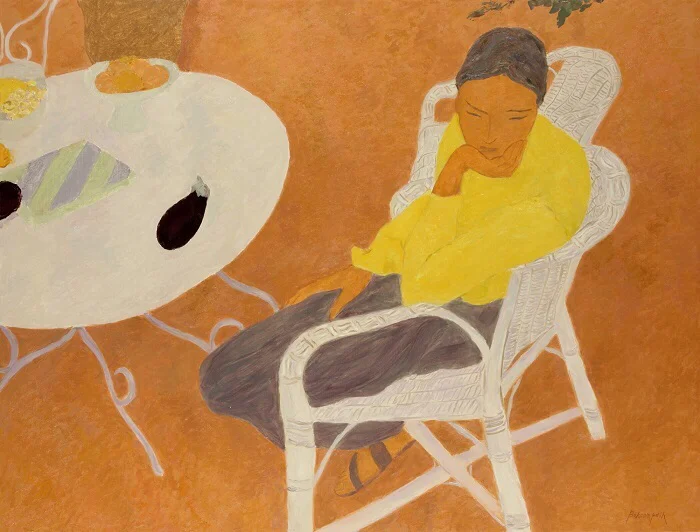The Inclusions & Exclusions of the Women’s March (And Why I Didn’t Go)
Illustration courtesy of Pierre Boncompain
Almost exactly two years ago, I was just beginning my second semester of college, trying to decide if I should pursue a degree in gender studies, and coping with the panic of living in D.C. in the era of Trump. I was also preparing for the first annual Women’s March on Washington, painting my “Queer Lives Matter” sign, and feeling grateful that I could be a part of history with hundreds of thousands of others that cold, Saturday morning. I vividly remember the bitter atmosphere of D.C., partially from the aftermath of Trump’s inauguration, but also from the march itself—its subtle lack of inclusion, its obvious exclusions, its white feminist roots that only hurt the women of color, the trans and nonbinary people, and the disabled who could not physically attend. I didn’t necessarily feel the hurt on that day with its momentum but days later, I understood why so many who did not hold the same white, cisgendered, and able-bodied privilege as I am had felt it.
Months later, I started to feel the hurt myself as I progressed in both my gender studies degree and embracing my lesbian identity. I realized how institutionalized these exclusions are.. The march only solidified these exclusions, proving that palatable versions of feminism—even in 2017—still only pertained to women with the most privilege: the white, cisgendered, straight woman. One year later, I made the conscious decision to not return, and I made this same decision for the one last weekend which,as according to a friend who decided to attend, carried even more numbers of white women in pussy hats than in previous years.
Who Is Included and Excluded, and Why This Matters
Reflecting on the March two years later has given me the time to understand its flaws and consider how certain bodies are affected in a multitude of ways. With mainstream social movements, there will be, without a doubt, a set of inclusions and exclusions, which is something I did not fully comprehend until participating in this form of activism. It was assumed that this Women’s March would be inclusive of all bodies, but the slogans on the signs, the actions of certain groups, and even the ones who did not make an appearance made it clear that this form of protest was only reserved for a small cluster of women, including myself.
I used my privilege as a white cisgendered woman to contemplate and question the swarm of pussy hats and “Viva La Vulva” posters. Was the March, consciously or not, defining womanhood as an essential biological fact, excluding trans and nonbinary bodies, those without pink pussies? Out of every 100 uterus posters, only one advocated for trans rights, which only felt misguided as trans women—and especially trans women of color—are disproportionately affected by unemployment, violence, and homelessness due to their identities with an array of health disparities. Although the march technically allowed for all to participate, it became clear that privileged white, able-bodied cis-women stood at the forefront while others were made less recognized, evident mostly through how trans women and signs to include them were outnumbered by trans-exclusive posters.
I made the realization that I would not be attending future marches when white attendees would entirely ignore the speakers on stage who did not fit into their perfect image of white feminism—people praised Gloria Steinem but yelled over Angela Davis, wishing to begin their march early. But for what? Would simply marching with exclusionary signs and yelling feminist mantras actually lead to any change in the dawn of Trump’s administration? I only hoped for intersectionality to be more of a priority for the next march, yet, as I heard from the news and friends, it appeared to be the same normative version of activism—predictable in its history. This worsened at last weekend’s march as the people hoping for more intersectionality who attended the 2018 March decided not to show, further lessening the diversity.
Performative Activism Is Not Everyone’s Form of Choice or Self-Care
The concept of performative activism has seemed to conquer all other forms of social movements, where people who are physically and mentally able to attend a movement only make an appearance just to share their Instagram-worthy posters with the world, proving that they in fact do care about social issues with receipts from their social media.
More so, this increase in posting about said version of activism has formed a pressure that everyone must be vocal about their values on their respected platforms to be the “correct” amount of “woke,” a term that has seemed to lose its meaning due to this trend.
This narrow understanding of activism asks, “If you didn’t post about the Women’s March or your thoughts on the Kavanaugh trial last September, are you allowed to call yourself an involved activist?”
While it is true that this form of activism is used by some as a restorative means of finding community in troubling times, it can lead to an opposite reaction for those often excluded in this type:the disabled who are physically unable to attend the march;the trans women of color who could potentially risk their lives for being vocal at such a white, mainstream rally; those with depression or anxiety where dwelling on events like these only make their mental health worse; and immigrants under proceedings or illegal who cannot risk being arrested. The march is meant to be a safe space for people drastically affected by our current political climate but, ironically, it excludes the people who need it the most, the marginalized lives whose mental or physical wellbeing could be hindered by attending a rally or march.
Posting on social media as a white, privileged woman could get the conversation started, but shouldn’t we be allowing those with less privilege to speak, particularly for the issues that directly affect them? Will people still listen when those issues are candidly presented in a non-digestible way, straying away from the social media-friendly pink-washed feminism that has become the norm?
As a white, college-educated queer woman who holds far more privilege than many of the bodies that need to be heard the most, I would have been both seen and heard at the march, just as I was in 2017. Yet, I decided to to pass two years in a row as I knew too many who would not hold this same privilege. I made it my conscious decision to only be a part of movements that include all voices, all bodies, and all identities that may clash with the ideologies white feminism has produced, particularly through the march. Ones that center these voices and bodies at the forefront.
Sadly, I used to view protests, especially the impromptu ones, as a means for me to cope with the fate that feels impossible to change. But now, it feels as if these are only futile due to these exclusions. So, I didn’t go.
Instead, I choose to make monthly donations to the Human Rights Campaign and the National Center for Transgender Equality. I choose to vote in every election I can, because that is ultimately what can lead to real structural change. I choose to commit my time and efforts to grassroots efforts year-round that enriches all communities, which we will be sharing in an upcoming article. And I chose to stay inside that cold, Saturday morning and avoid social media as my way to get through the day. I suggest to do the same for those with the privilege, and for those without it: you are seen, and you are heard.
About the Author
Natalie Geisel is in her third year at The George Washington University studying women’s, gender, and sexuality studies with a minor in communication. Her love of writing sprouted from starting her fashion blog in high school, and her current written work spans from topics such as style, LGBTQ+ content, and music. She is interested in intersecting gender and sexuality into the world of wellness, hoping to add a queer voice to its editorial side. When she’s not writing, she spends her spare time at dance rehearsal, attending local indie shows in the DC area, or finding the best cafes that serve oat milk. She’s passionate about inclusive sex education and sustainable fashion and thinks everyone should be, too.




